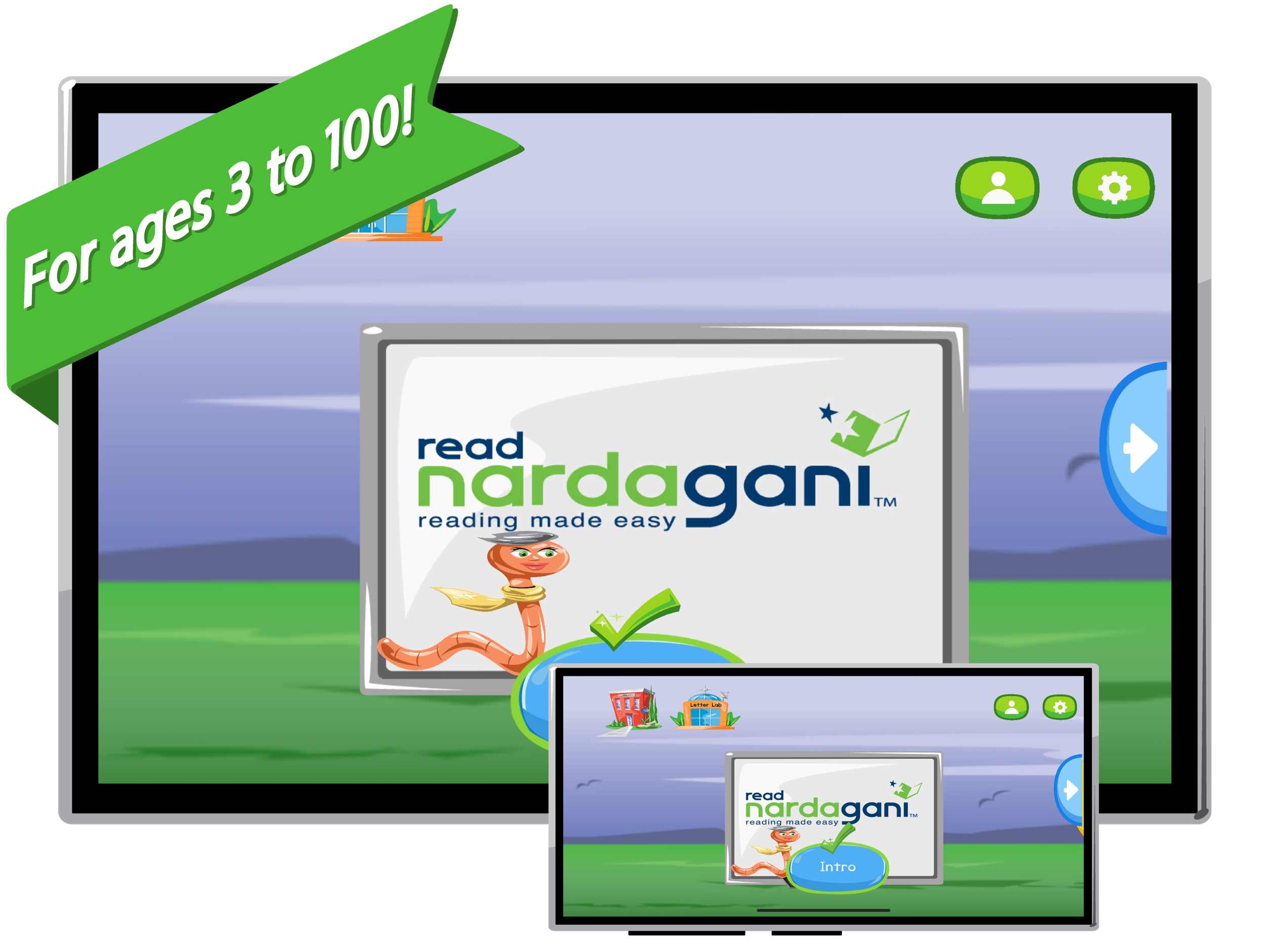Why English Is Hard to Learn: Rules, Exceptions, and a Smarter Way to Read
Eight-year-old Maya loved bedtime stories. Every night, she and her dad would curl up on the couch with her favorite picture book. But one evening, something was off.
“Daddy, how come ‘read’ rhymes with ‘reed’ sometimes… and with ‘red’ other times?” she asked, her brow furrowed.
Her father laughed, stalling for time. “English is… well, it’s tricky.”
Later that night, Maya’s mom—an adult literacy student—whispered, “That’s the same question I asked my tutor last month.”
As a family, they searched for a way to make reading make sense. That’s when they found the Nardagani Reading Program—a phonics-based system designed to eliminate the confusion that plagues so many adult learners and their children.
Young Maya learn to read English with her Mom
Why Learning to Read English Can Be So Hard
English has been called a "weird" language for a reason. With countless rules—and even more exceptions—learning to read English can be overwhelming for adults just starting out. From inconsistent spelling to irregular plurals, it’s no wonder so many people struggle.
Let’s break down some of the trickiest parts of English, and how the Nardagani Reading Program helps make reading easier for adults.
1. "I Before E Except After C" (Except When It’s Not)
Learn to read English letter “i”
You’ve probably heard this rule: “I before E except after C.” It works for words like "believe" and "friend," but fails in "weird," "science," or "their."
Real-life example: Sarah, an adult learner in our program, shared how confusing this rule was when helping her son with homework. “I kept second-guessing myself—even as a native speaker!”
2. Capital "I" — The Lone Uppercase Pronoun
In English, the pronoun "I" always gets capitalized—while words like "he," "she," or "they" don’t. Why? No one really knows. But it’s one more strange rule learners have to memorize.
3. The Oxford Comma Debate
Some say use it. Others say don’t. The Oxford comma—used before the final item in a list—is a constant source of confusion.
Example: I love reading, dancing, and cooking.
Some guides insist on it; others skip it. If you're learning English, that's just another contradiction.
4. Verb Tense Tangles
English has 12 tenses. That’s twelve different ways to say the same thing depending on time, mood, or perspective.
Let’s look at just one verb: to eat
I eat (present)
I ate (past)
I will eat (future)
I was eating (past continuous)
I will have eaten (future perfect)
Confused? So are millions of adult learners.
Luis, a Nardagani student originally from Peru, put it best:
“In my language, you learn tenses once. In English, every verb becomes a riddle.”
Adult and young child having fun learning to read English
5. Plural Rule-Breakers
Let’s talk about plurals. You’d think you just add “-s” to make a word plural. That’s what makes sense, right?
So why does:
“Goose” become “Geese”
“Child” become “Children”
“Tooth” become “Teeth”
But then you have:
“Moose” stays “Moose”
“Fish” can be “Fish” or “Fishes”
These aren’t rules—they’re curveballs.
How Nardagani Makes Learning to Read English Simpler
This is where the Nardagani Reading Program shines. Instead of memorizing endless spelling rules and exceptions, learners use 12 unique symbols that guide pronunciation and understanding.
Each symbol in the system represents a specific sound. These symbols appear below letters, helping readers—especially beginners—know exactly what sound to make without guessing.
Students learn just a few symbols at a time, reinforcing them through:
Games and activities
Coded reading materials
Interactive reading sessions
Real-world impact: Jasmine, a 45-year-old mother of two, never thought she’d enjoy reading out loud. “I used to skip bedtime stories because I couldn’t keep up. Now, I read them with confidence. My kids listen—and correct me less!”
Nardagani App is usable on both phone and tablet. It also supports ages from 3 to 100!
Benefits for Adults and ESL Learners
For those seeking online literacy programs for adults or phonics help for ESL learners, Nardagani provides:
A self-paced, non-judgmental environment
A clear roadmap from letter recognition to reading fluency
Support for dyslexia and other reading challenges
Many adult learners feel ashamed or embarrassed about struggling with reading. Nardagani helps replace that fear with pride, one sound at a time.
A New Way to Learn to Read English
Traditional methods often leave adult learners behind. Nardagani brings them forward—by making the invisible rules of English visible.
Whether you want to learn to read English yourself or help a loved one, the first step is simpler than you think.
You can learn more about the Nardagani reading program on our iOS & Android apps. Also you can watch Narda’s TEDx talk, “A New Way to Learn to Read English.”





